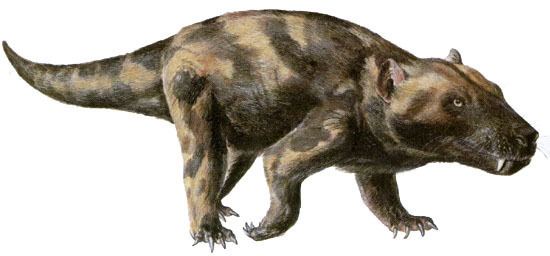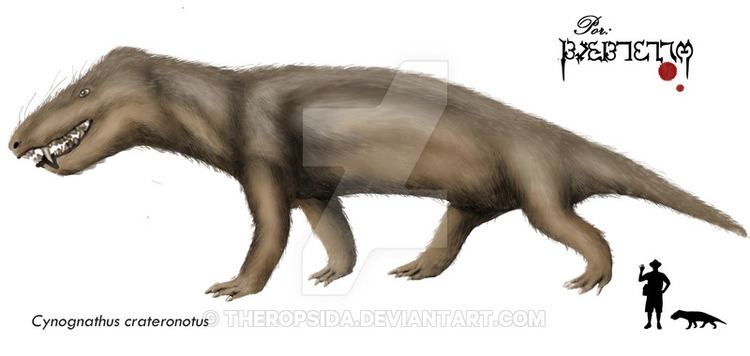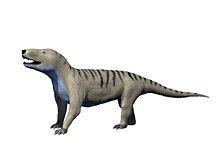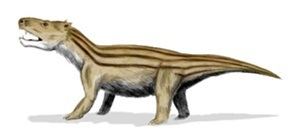Scientific name Cynognathus | Higher classification Cynognathidae | |
 | ||
Family †CynognathidaeSeeley, 1895 Similar Cynodont, Lystrosaurus, Therapsid, Synapsid, Mesosaurus | ||
Cynognathus tribute
Cynognathus is an extinct genus of large-bodied cynodont therapsid that lived in the Early and Middle Triassic. It is known from a single species, Cynognathus crateronotus. Cynognathus was a 1.2 meter-long predator closely related to mammals and had an almost worldwide distribution. Fossils have so far been recovered from South Africa, South America, Antarctica, and Western Africa.
Contents
- Cynognathus tribute
- clash of the creatures battle 1 hyaenodon vs cynognathus
- Taxonomy
- Description
- Provenance
- References

clash of the creatures battle 1 hyaenodon vs cynognathus
Taxonomy

The genus Cynognathus (from Greek κυνόγναθος, meaning "dog jaw") has been given several different names over the years. It has also been known as Cistecynodon, Cynidiognathus, Cynogomphius, Karoomys, Lycaenognathus, Lycochampsa and Lycognathus. Cynognathus is the only recognized member of family Cynognathidae. Opinions vary as to whether all remains belong to the same species.

Species-level synonyms of Cynognathus crateronotus include Cistecynodon parvus, Cynidiognathus broomi, Cynidiognathus longiceps, Cynidiognathus merenskyi, Cynognathus beeryi, Cynognathus minor, Cynognathus platyceps, Cynogomphius berryi, Karoomys browni, Lycaenognathus platyceps, Lycochampsa ferox, Lycognathus ferox, and Nythosaurus browni.
The genera Karoomys and Cistecynodon are known only from tiny juveniles.
Description

Cynognathus was a heavily built animal, and measured around 1.2 metres (3.9 ft) in snout-to-vent body length. It had a particularly large head, 30 centimetres (1 ft) in length, with wide jaws and sharp teeth. Its hind limbs were placed directly beneath the body, but the fore-limbs sprawled outwards in a reptilian fashion. This form of double (erect/sprawling) gait is also found in some primitive mammals alive today.

The dentary was equipped with differentiated teeth that show this animal could effectively process its food before swallowing. The presence of a secondary palate in the mouth indicates that Cynognathus would have been able to breathe and swallow simultaneously.
The lack of ribs in the stomach region suggests the presence of an efficient diaphragm: an important muscle for mammalian breathing. Pits and canals on the bone of the snout indicate concentrations of nerves and blood vessels. In mammals, such structures allow hairs (whiskers) to be used as sensory organs.
Provenance
Fossils have been found in Karoo; the Puesto Viejo Formation; Fremouw Formation, in South Africa/Lesotho; Argentina; Antarctica.
Cynognathus lived between the Spathian (Lower Triassic) and the Anisian (Middle Triassic).
